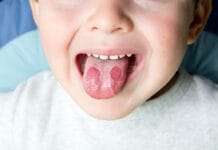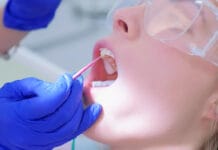According to the United Network for Organ Sharing (UNOS), 34,893 organ transplants were completed in the United States between January and September 2023, including donations from both living and deceased donors. Even with this large amount, 103,583 people are currently awaiting transplants.1
The American Transplant Foundation states that one person is added to a transplant waiting list every 10 minutes. They also state that liver and kidney disease kills more people each year than breast cancer, Alzheimer’s disease, and prostate cancer combined.2
The two different kinds of organ donations are organs harvested from a deceased donor and those taken from a live donor. Organs that can be donated by a deceased person include heart, liver, kidneys, lungs, pancreas, and small intestines. Tissues that can be donated include corneas, skin, veins, heart valves, tendons, ligaments, and bones.
A living donor can donate a kidney, part of the liver, lung, intestine, blood, or bone marrow.2
Considerations for the Dental Hygienist
Due to the increasing demand for organ transplants, dental hygienists can be certain that one of these patients will wind up in their chair. A medical consultation with the patient’s physician and/or surgeon is a good protocol to have in place as a first step in treating these patients. Ideally, this should be completed prior to completing any dental treatment.
The consultations allow us to see if there should be a delay in dental treatment or any other recommendations for the patient. One example is the need for premedication prior to treatment, a common recommendation for organ transplant patients.
Depending on the patient’s medical history and medications they are taking, there may be different recommendations based on if the dental treatment is going to be invasive or noninvasive. For example, many organ transplant patients are on anticoagulants, and physicians may recommend these medications be stopped for a short time prior to invasive dental treatment.3 Knowing a patient’s INR is critical prior to any dental treatment for any patient taking these medications, but is especially pertinent for our organ transplant patients.4
In the case of kidney transplant patients, it is recommended that they avoid dental treatment on the days they have dialysis.3
Oral Manifestations
Gingival hyperplasia is an oral manifestation you will most likely encounter with some transplant patients, primarily as a result of certain immunosuppressive drugs. Another thing to be aware of is that these patients tend to be taking antibiotics, which can increase their chances for oral candidiasis.5 Xerostomia is another common oral manifestation seen in these patients.5
As hygienists, an oral cancer screening is already our standard of care. But we should be on high alert that these patients are at a higher risk for developing oral malignancies such as squamous cell carcinoma, lymphoma, and Kaposi’s sarcoma, all of which, according to one article, “can occur decades earlier in transplant recipients than in people who are not immunosuppressed.”3
Tailoring Your Hygiene Approach
Every organ transplant patient is unique, and our hygiene appointments and home care recommendations should mirror this. Some patients may have difficulty maintaining good oral hygiene due to mouth pain from candidiasis or xerostomia, as well as general fatigue caused by certain transplant surgeries.6
As hygienists, it is our job to educate them on the bidirectional relationship between their oral and overall health. We can encourage them to maintain the best oral hygiene as possible and give them different tools specific to their needs to help them achieve this. Whether this is recommending a soft toothbrush for a patient with sore gingiva, or an alcohol-free mouth rinse for patients suffering from xerostomia. If the patient understands that they are at an increased risk for oral infection, gum disease, tooth loss, and oral cancer, hopefully, they will be willing to listen to your recommendations.
We can also educate them about the oral-systemic link and how bacteria in the oral cavity do not simply remain there; it travels throughout the entire body. One article about organ transplants supports this and states, “All active dental disease should be aggressively treated before transplantation since postoperative immunosuppression decreases a patient’s ability to resist systemic infection.”3
Due to their increased risk of infection, these patients may benefit from frequent recalls to help them keep their oral bacteria load controlled. Hygienists may consider additional measures for these patients to help keep them safe and healthy. For example, scheduling these patients for treatment first thing in the morning helps ensure they are less likely to come into contact with bioaerosols generated by other patients.
Timeline for Dental Treatment
Whenever possible, all invasive dental treatment should be performed prior to transplant surgeries.7 This includes periodontal therapy, restorative, and endodontic therapy. It is recommended that teeth with a poor prognosis be extracted.7 It is also advised that, after transplant surgery, routine dental treatment should be postponed for three months.7
The first six months following a transplant are considered the most critical for these patients. Should the patient need dental care during this time period, it is recommended that it be completed in a hospital setting.4
Conclusion
Because patients with transplants have a weaker immune system, it is important for us to consult with and stay in contact with their other health-care providers so that we know we are doing all that we can to keep the patient healthy and safe.
Before you leave, check out the Today’s RDH self-study CE courses. All courses are peer-reviewed and non-sponsored to focus solely on high-quality education. Click here now.
Listen to the Today’s RDH Dental Hygiene Podcast Below:
References
- United Network for Organ Sharing Homepage. (2023, October 16). https://unos.org/
- American Transplant Foundation. https://www.americantransplantfoundation.org/
- Dental Management of the Organ or Stem Cell Transplant Patient. (2016, July). NIH: National Institute of Dental and Craniofacial Research. https://www.nidcr.nih.gov/sites/default/files/2017-09/dental-management-organ-stem-cell-transplant.pdf
- Achtari, M.D., Afentoulide, N., Georgakopoulou, E. Dental Management of Patients Before and After Renal Transplantation. Baltic Dental and Maxillofacial Journal. 2011; 13: 107-112. https://sbdmj.com/114/114-01.pdf
- Agrawal, A., Murari, A., Singh, A., Verma, R. Oral Candidiasis: An Overview. Journal of Oral and Maxillofacial Pathology. 2014; 18(Suppl 1): S81-S85. https://www.ncbi.nlm.nih.gov/pmc/articles/PMC4211245/
- Berg‐Emons, R.V., Ginneken, B.V., Kazemier, G., et al. Fatigue is a Major Problem after Liver Transplantation. Liver Transplantation. 2006; 12(6): 928-933. https://aasldpubs.onlinelibrary.wiley.com/doi/full/10.1002/lt.20684
- Thomas, C. Oral Health Before and After Transplant. (2015, July 1). National Kidney Foundation. https://www.kidney.org/content/it-time-visit-dentist











